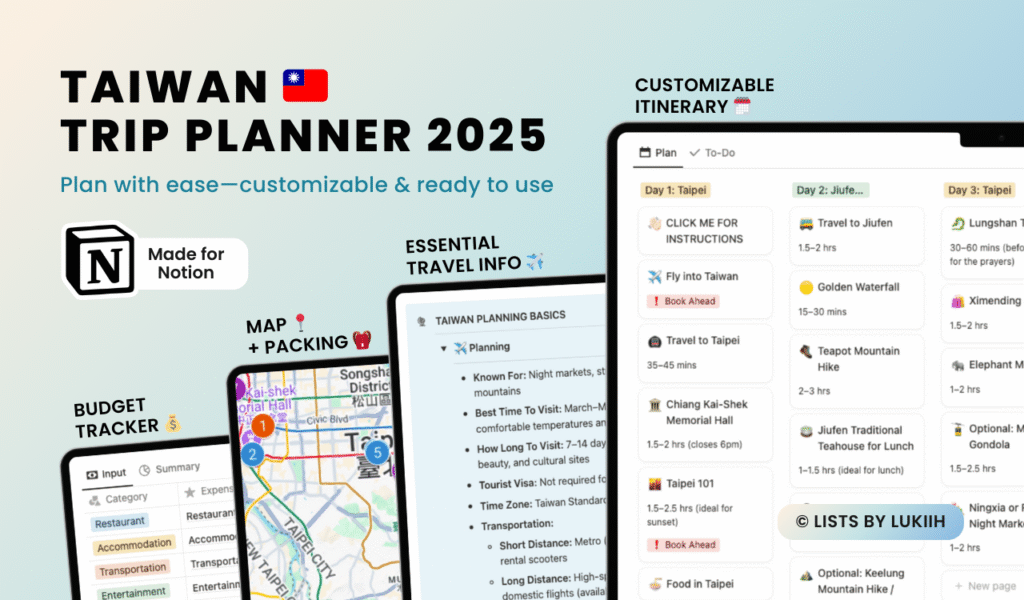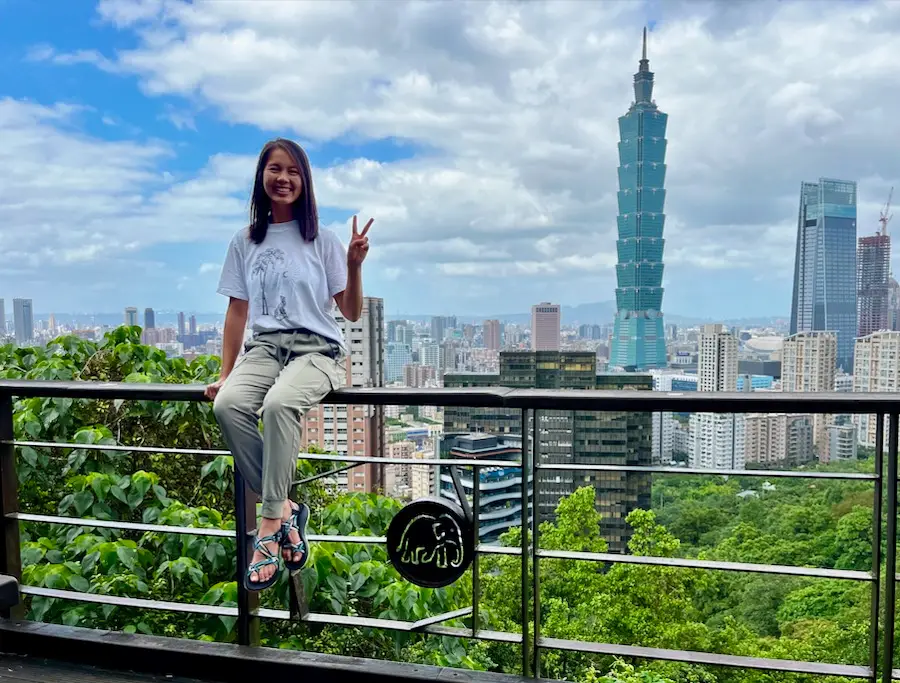- Map
- Overview
- Great Things To Do in Taipei
- 1. Hike Up Elephant Mountain
- 2. Take a Day Trip to Jiufen
- 3. Eat Affordable, Local Taiwanese Food
- 4. Take a Trip to Taroko Gorge
- 5. Eat at a Taiwanese Night Market
- 6. Catch the Morning Prayers at Lungshan Temple
- 7. Go Up to Taipei 101’s Observatory
- 8. Visit Chiang Kai-Shek Memorial Hall
- 9. Explore Ximending District
- 10. Take a Dip in a Beitou Hot Springs
- Great Things To Do in Taiwan
- Where To Stay in Taipei
Lists By Lukiih is readers-supported. When you buy with my affiliate link, I may earn a small commission. Thanks!
📍 Itinerary Map
This itinerary takes you to Taiwan’s top destinations:
- Taipei – the most popular city blending the modern with the traditional
- Jiufen – picturesque hillside village known for traditional teahouses
- Hualien – the gateway to Taroko Gorge, a top natural attraction that was devastated by an earthquake in 2024, but is slowly recovering in 2025
🇹🇼 Planning a Trip to Taiwan: 12 Practical Things To Know
🗓️ Itinerary Overview
Below is a great way to spend a week in Taiwan. This itinerary is well-researched, highlights major attractions, and reflects lessons from my travel experience.
My Taiwan trip planner has this itinerary prefilled with 2025 updates and more details.
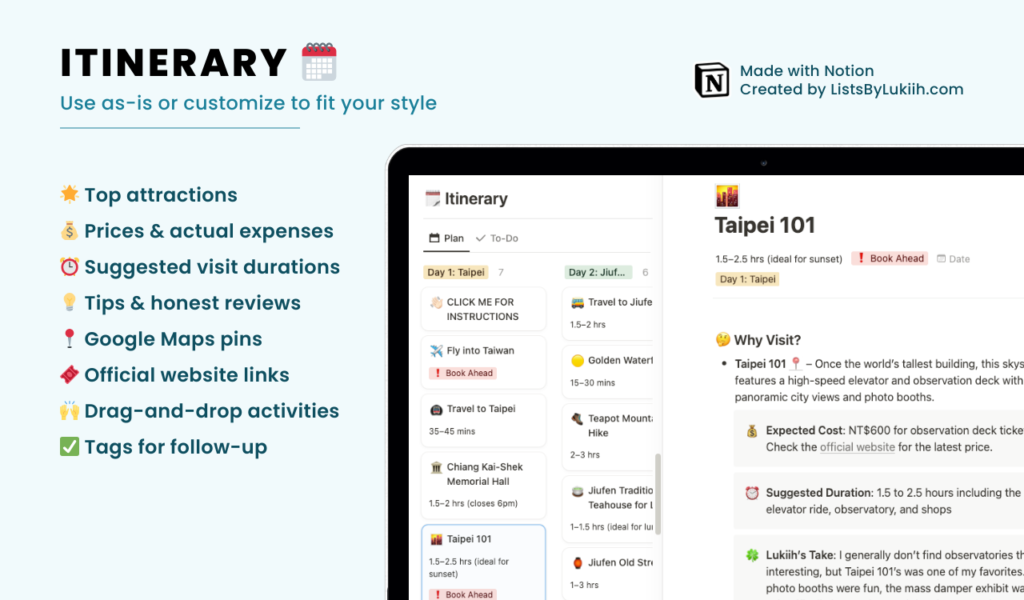
| Day 1 – Arrive in Taipei | ||
| ✈️ | Arrive at Taiwan Taoyuan International Airport | Morning |
| 🏠 | Have lunch and settle down | 12:30–2 pm |
| 🌳 | Visit Chiang Kai-shek Memorial Hall | 2–3:30 pm |
| 🛍️ | Check out Taipei 101 shopping center | 4:30–5:30 pm |
| 🌅 | Catch the sunset at Taipei 101 observatory | 5:30–6:30 pm |
| 🥟 | Eat dinner at Din Tai Fung | 7–8 pm |
| Day 2 – Jiufen Day Trip | ||
| 🥛 | Have breakfast at Fuhang Soy Milk | 7:30–8 am |
| 🏮 | Take a day trip to Jiufen | All day |
| Day 3 – Full Day in Taipei | ||
| 🥚 | Eat breakfast at a 7-Eleven | Before 8 am |
| 🐉 | Catch the prayers at Lungshan Temple | 8–9 am |
| 🚶🏻♀️ | Explore Ximending Walking District | 9:30–12 pm |
| 🍜 | Have lunch at Lao Shandong Homemade Noodles | 12:15–1 pm |
| 🐘 | Hike Elephant Mountain | 2–3:30 pm |
| 🌳 | Ride the Maokong Gondola or take a breather | 4:30–6:30 pm |
| 🌙 | Have dinner at Raohe or Ningxia Night Market | 7–8:30 pm |
| Day 4 – Taroko Gorge Day Trip | ||
| 🦁 | Take a day trip to Taroko Gorge | All day |
| 🌙 | Have dinner at Dongdamen Night Market | 6:30–8 pm |
| Day 5 – Travel to Taipei or Sun Moon Lake | ||
| 🚶🏻♀️ | Explore Hualien or rest | Morning |
| 🚋 | Train back to Taipei or visit Sun Moon Lake | 3–5 hours |
| Day 6 – Choose Your Own Adventure | ||
| 📍 | If you’re back in Taipei, visit Yangmingshan National Park or Yehliu Geopark. | All day |
| ☀️ | If you’re in Sun Moon Lake, spend a day there and account for the 3-4 hours it takes to return to Taipei. | All day |
| Day 7 – Northern Taipei and Depart | ||
| 🌡️ | Relax in a Beitou hot spring | 10 am–1 pm |
| 🥦 | Visit National Palace Museum | 2–3:30 pm |
| 🌙 | Visit Shilin Night Market (if you have time) | 4 pm–flight |
| ✈️ | Depart from Taiwan | Evening |
All prices mentioned here are in USD 💵 .
10 Great Things To Do in Taipei
Having spent seven packed days in Taiwan, I share my recommendations and honest opinions on the top attractions and activities below.
1. Hike Up Elephant Mountain
🐘 Why: Elephant Mountain is a metro-accessible hike in Taipei that will give you a fantastic city view. The view includes Taipei 101, an iconic building that was the world’s tallest building until 2010.
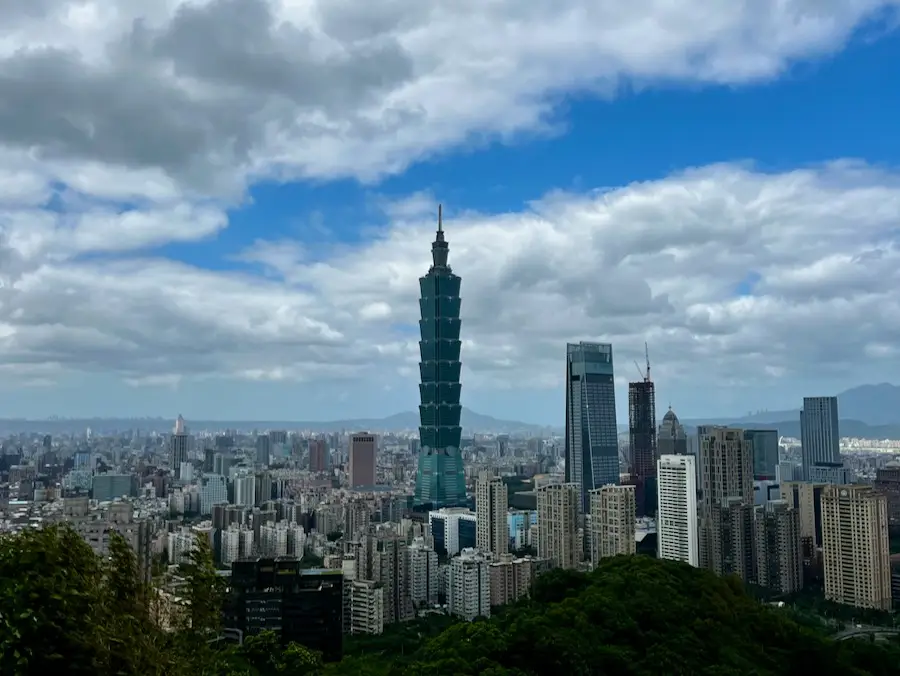
🌟 Top Thing To Do: The main activity is to walk up Elephant Mountain’s ~600 steps to get a great view of Taipei. There are also several other hiking trails if you want to extend your stay.
The best place to take photos is at the overlooks on Elephant Mountain. The lookout point at the summit is not a great place to take photos, as it is blocked by trees.
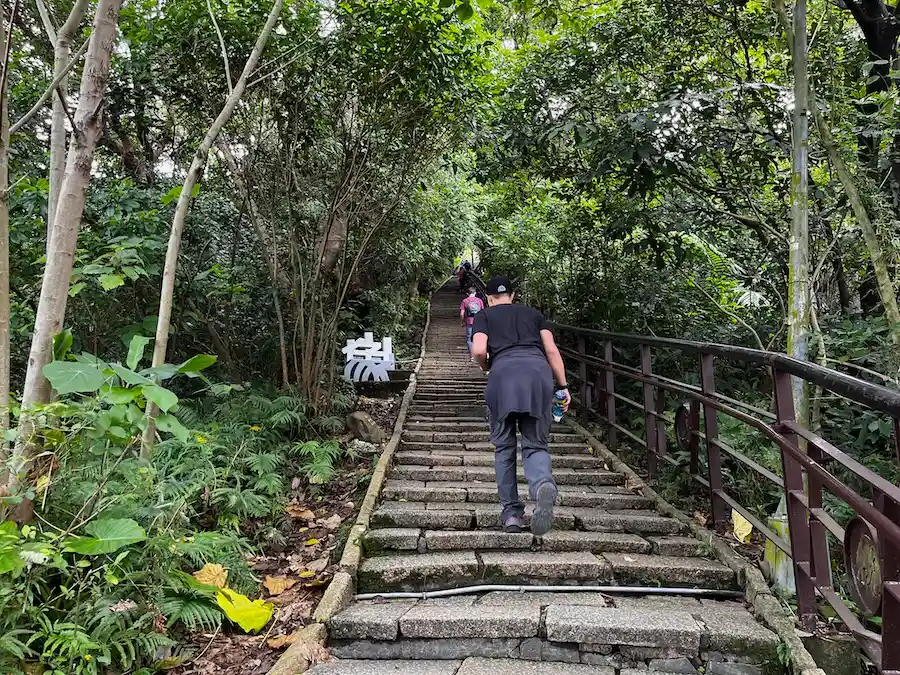
2. Take a Day Trip to Jiufen
🍵 Why: Jiufen is a small, picturesque village in the mountains an hour east of Taipei. It’s known as the town that inspired Spirited Away, but director Miyazaki denies this. The atmospheric streets and traditional teahouses make it a popular destination.
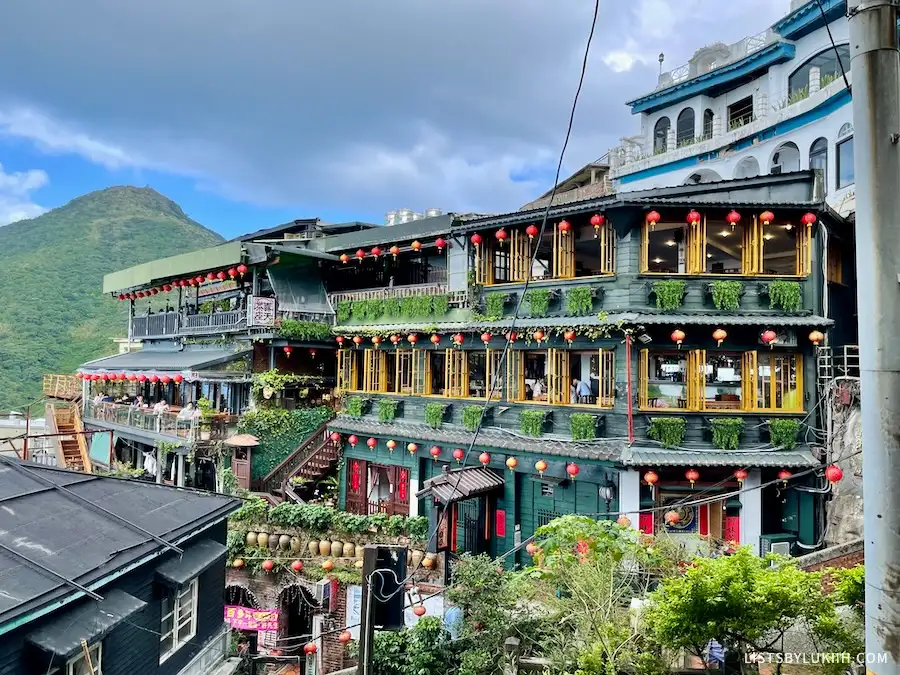
🌟 Top Things To Do: In Jiufen, you can:
- Enjoy tea and snacks at a traditional teahouse with incredible mountain views
- Walk through the famous Jiufen Old Street, that’s filled with shops and local snacks
- Hike up Keeluung Mountain Trail for a view of Jiufen
- Visit several of Jiufen’s nearby attractions, including Golden Waterfall, Shifen Waterfall, and Teapot Mountain
🏮 Jiufen Day Trip: Honest Review & Tips
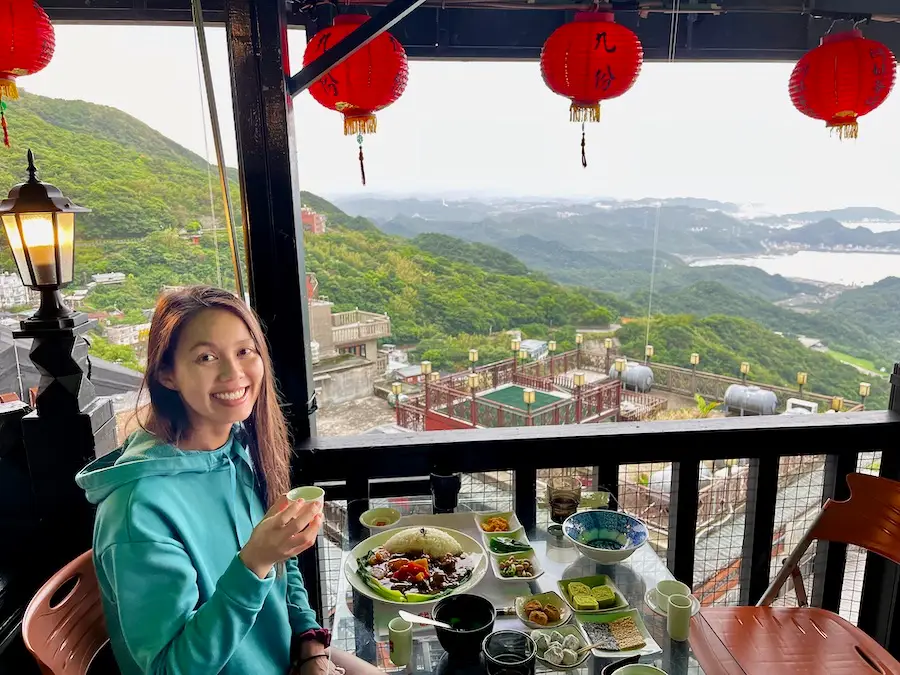
If you’re visiting by car or taxi, you can stop by the Golden Waterfall and/or hike up Teapot Mountain on the way from Taipei to Jiufen.
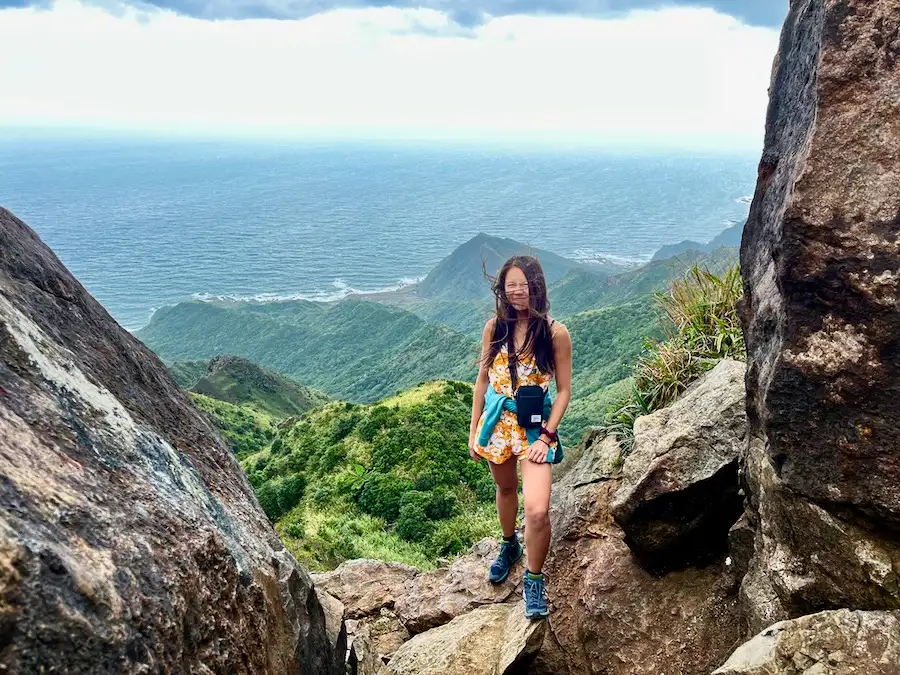
3. Eat Affordable, Local Taiwanese Food
🍚 Why: With its cheap, unique, and delicious food, Taiwan is often considered a foodie’s paradise.
🍜 What To Eat and Where: Below are Taipei restaurants I tried and loved, recommended by my friend, Ella Park-Chan, who lived in Taiwan for three years.
- Din Tai Fung – This is the original location of the internationally renowned restaurant known for its excellent soup dumplings. I also love their spicy noodles, pickled cucumber, and chocolate soup dumplings. Expect a long wait (about one hour) during peak lunch and dinner times.
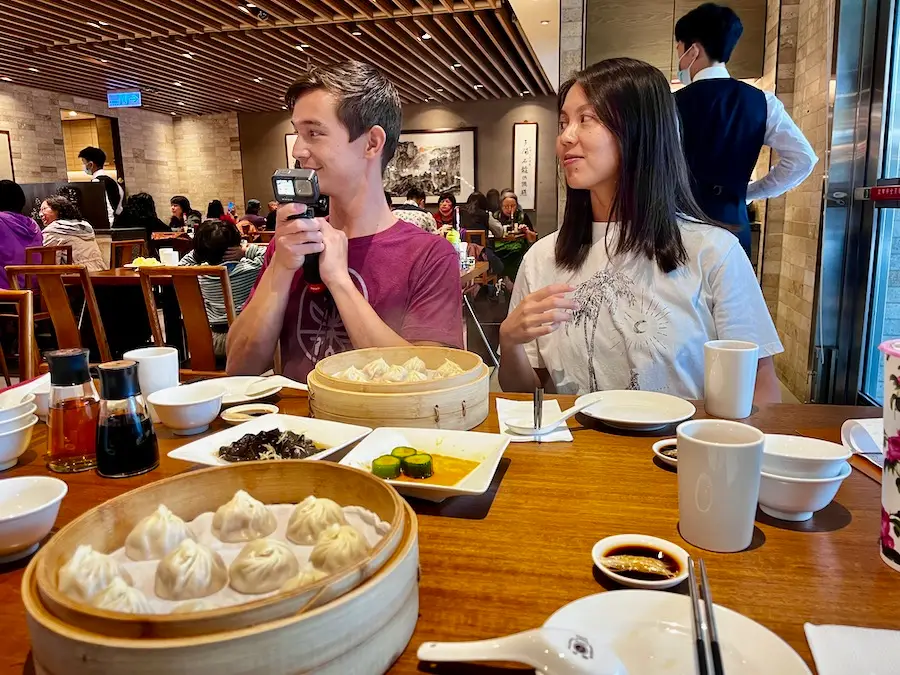
- Fuhang Soy Milk – Locals consider this the #1 breakfast place. Their sweet soy milk was delicious, and their salty soy milk was one of the most unique things I’ve eaten. Get there before 8 am if you want to wait less than 30 minutes. This place is cash-only.
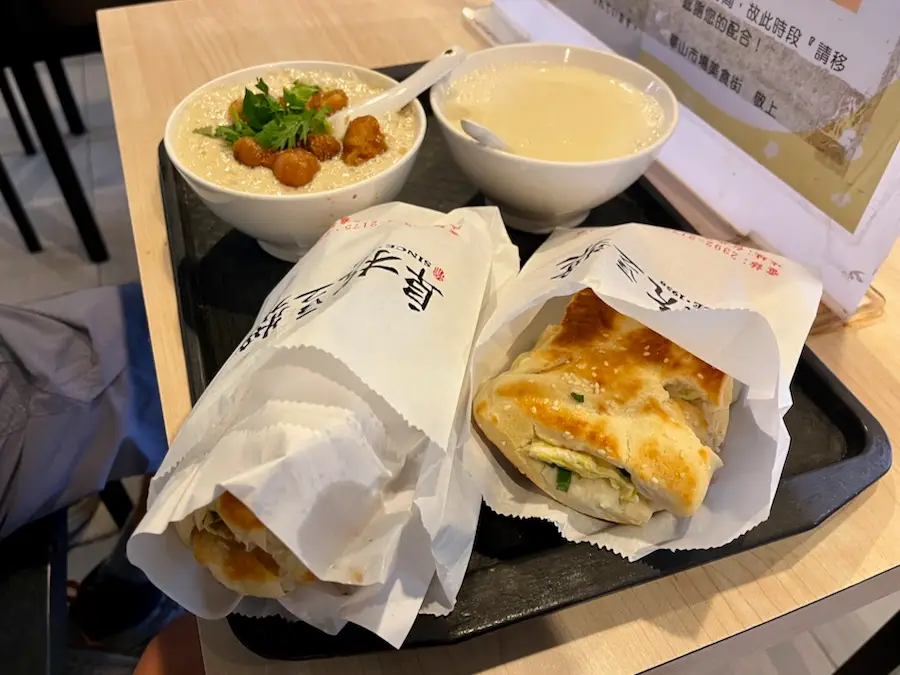
- Lao Shandong Homemade Noodles – Beef noodle soup is a must-have in Taiwan, and this local place serves it well without frills. This place is cash-only.
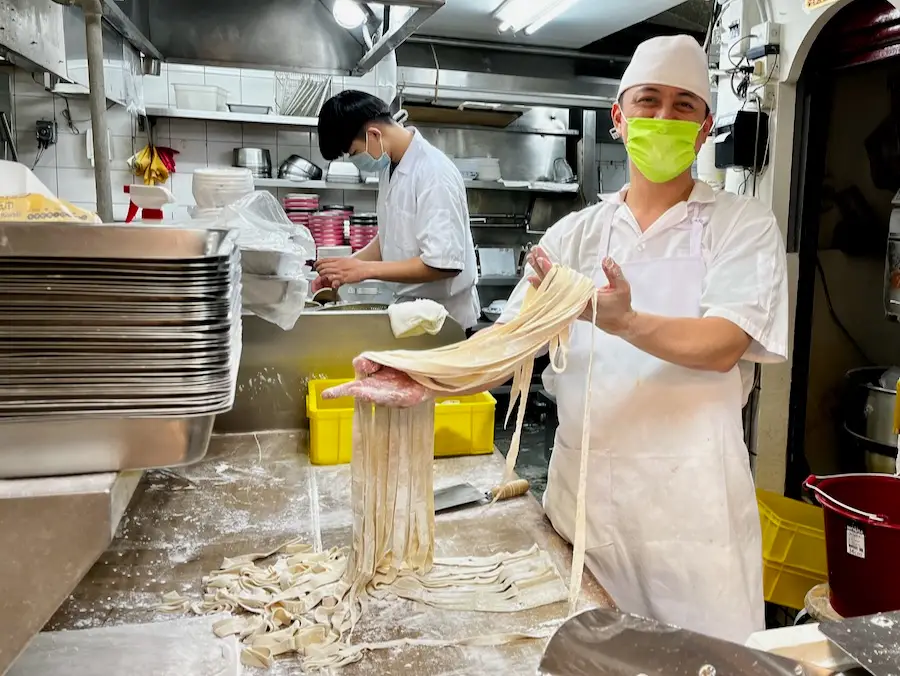
- CoCo (multiple locations) – Bubble tea originated in Taiwan, so you’ll easily find excellent bubble tea shops everywhere. CoCo is one of the popular chains, and I thought their tapioca pearls were fresh and chewy.
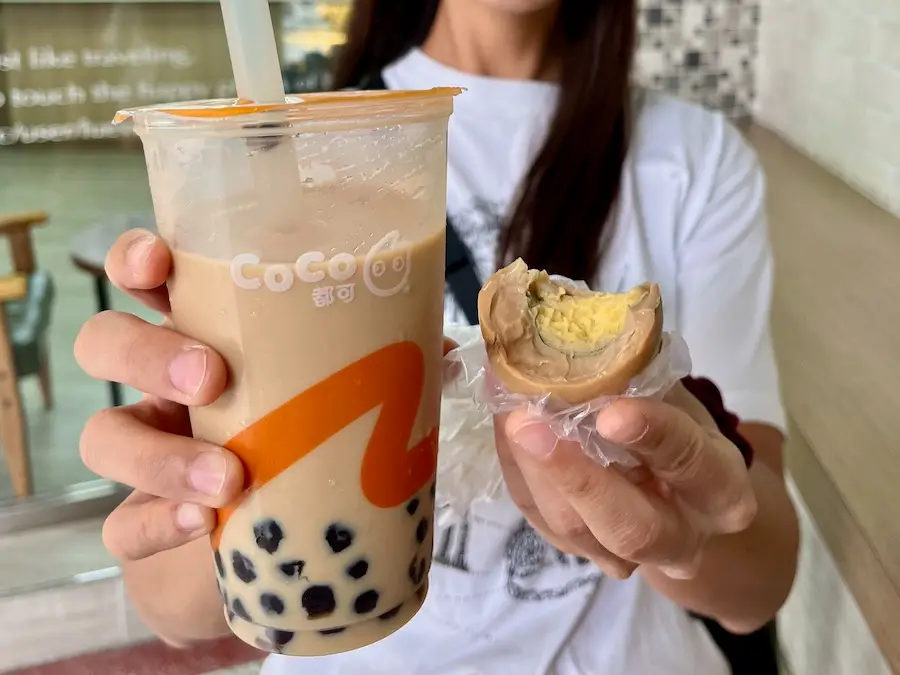
- Chia Te Bakery – Taiwan is famous for its pineapple cakes, and this bakery is known to serve some of the best ones. I enjoyed the different flavors of pineapple cake (e.g., salty egg yolk, red bean, melon) and packed a few to bring home.
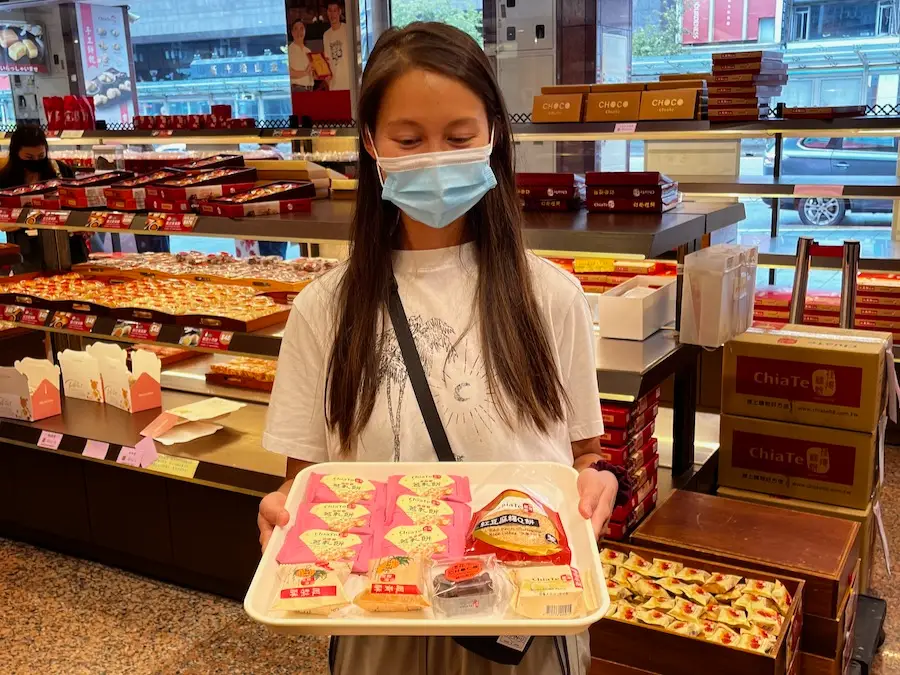
- Orange – This upscale restaurant served some of the best shabu shabu I’ve ever had for a relatively affordable price. However, advanced reservations are required.
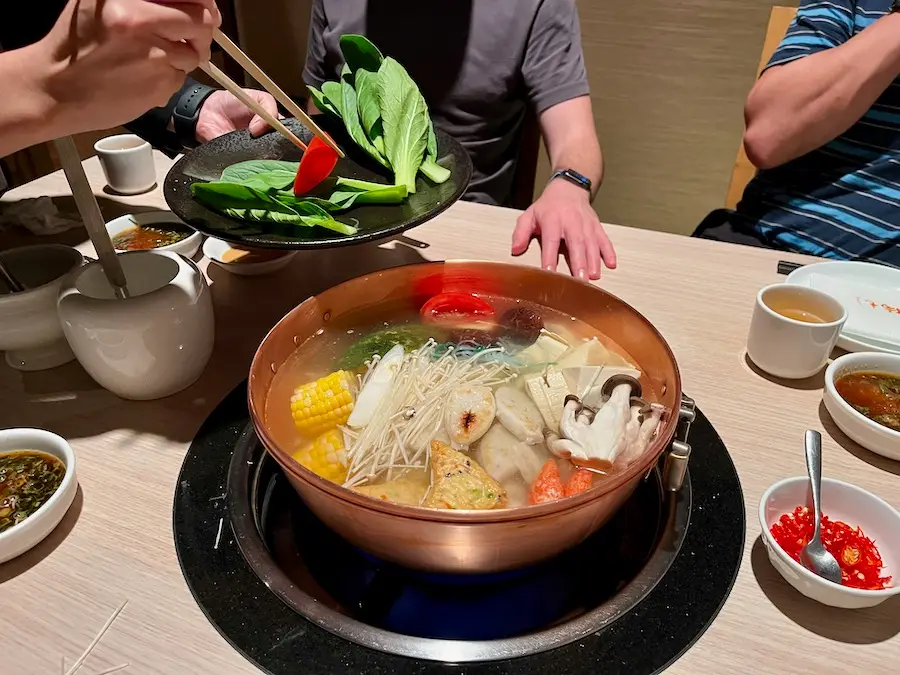
- Xiang Duck Taipei – If you’re craving Peking duck, this restaurant makes them with a delicious crispy skin. Their milk dessert is one of my favorite desserts in Taiwan.
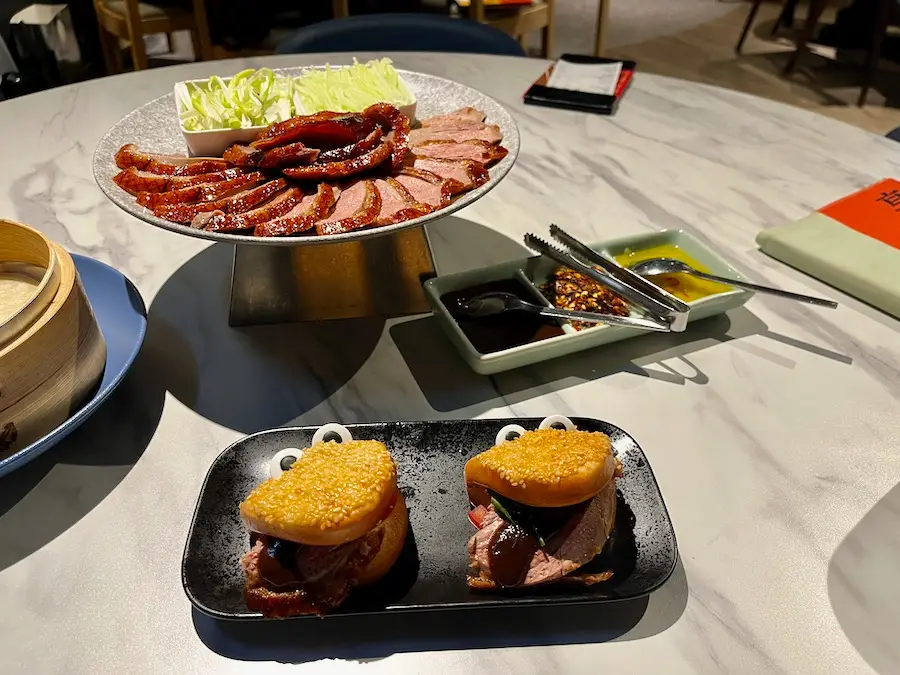
4. Take a Trip to Taroko Gorge
⛰️ Why: Taroko Gorge, the hallmark of Taroko National Park, is one of Taiwan’s top scenic attractions, known for its marble mountains, shrines, and sky-blue river. It’s a popular destination for hikers and tourists.
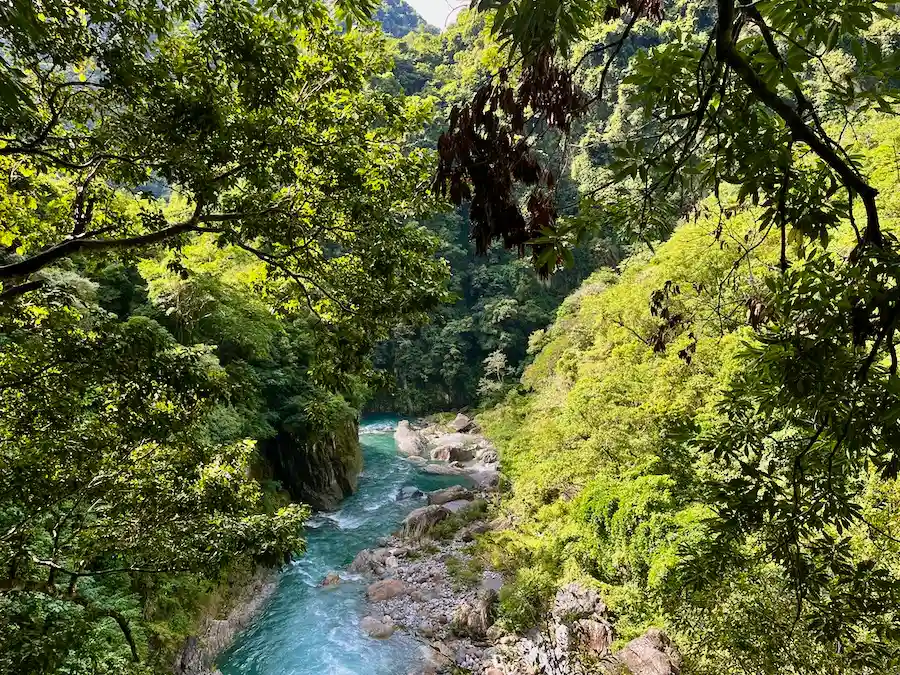
🌟 Top Things To Do There: There are several sites to visit inside Taroko Gorge:
- Shakadang Trail – This is one of the most popular trails that runs along a beautiful blue river. Make sure to get there early to beat the traffic.
- Eternal Spring Shrine – This shrine, nestled inside a mountain, commemorates the more than 200 workers who died building the highway in the early 1900s.
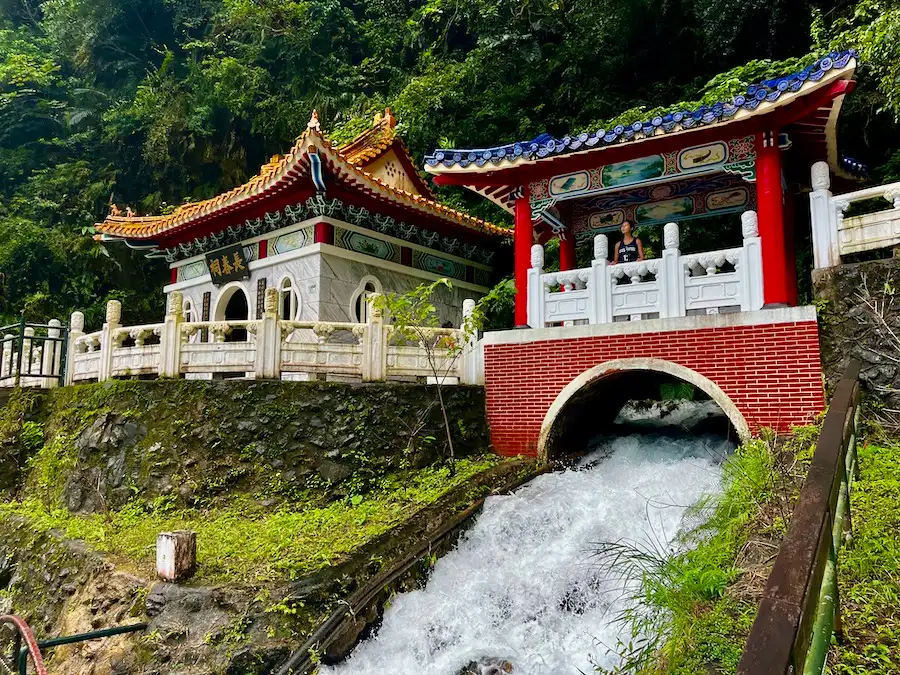
- Bulowan Suspension Bridge – This is one of the highest suspension bridges in Taiwan and attracts a big crowd.
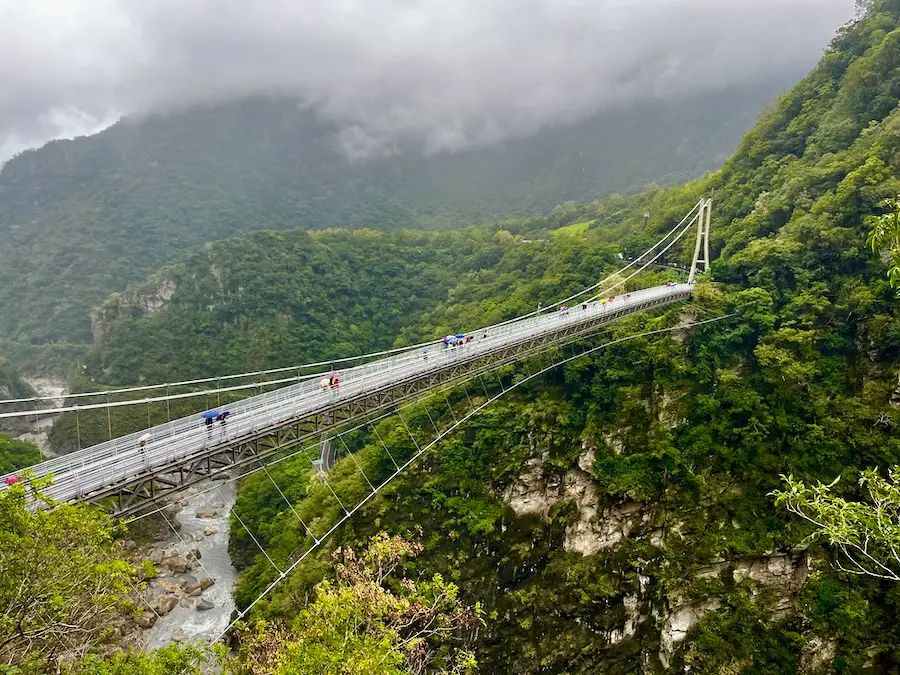
Taroko Gorge is near Hualien City. Hualien is quieter than Taipei but has a huge, lively night market called Dongdamen that I thought was better than many of Taipei’s night markets.
🍃 Taroko Gorge Day Trip: Honest Review & Tips
5. Eat at a Taiwanese Night Market
🍚 Why: Taiwan is famous for its bustling night markets and street foods. Night markets also allow you to try a variety of affordable local foods all in one area.
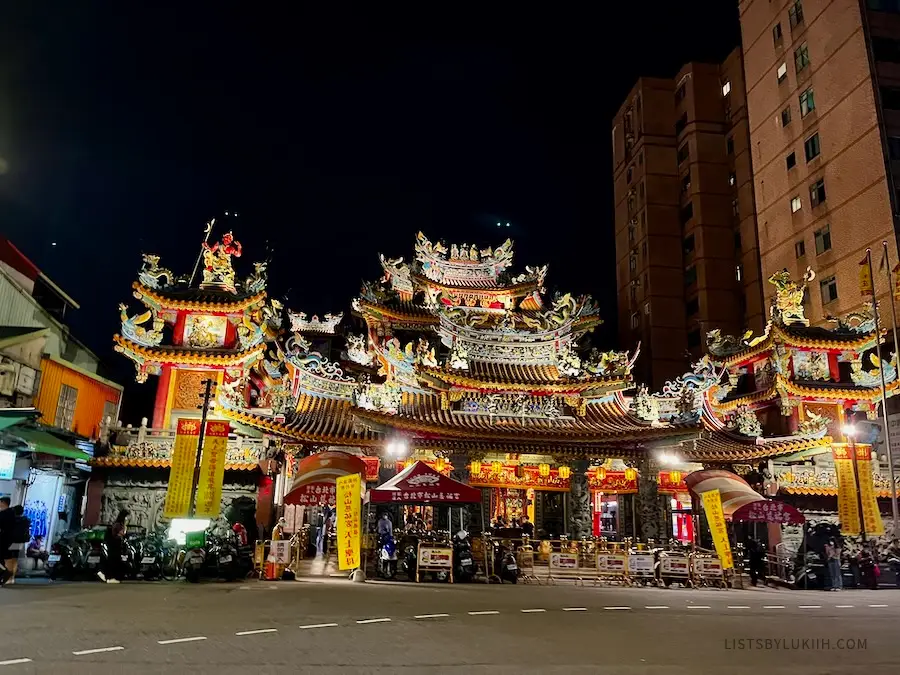
🌟 Where To Eat: These three are considered Taipei’s best night markets:
My favorite night market was the Dongdamen Night Market in Hualien City due to its large size, food diversity, and quality.
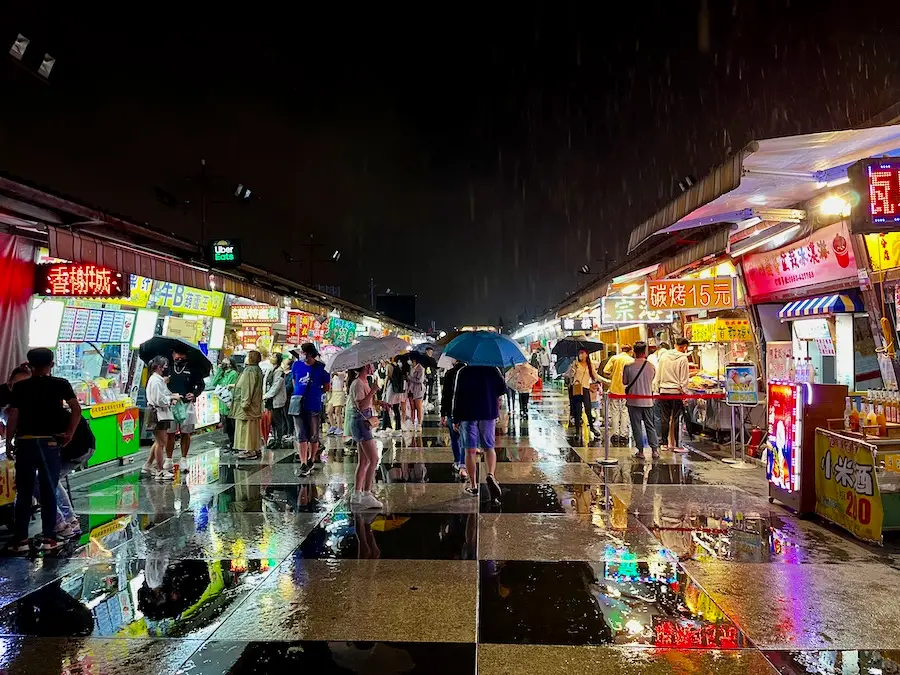
🍜 What To Eat: Street food recommended to me by my Taiwanese friends that I think are worth trying include:
- Spicy scallion with fried egg – The sauce used on the spicy scallion is incredible. I ate this at three different night markets, but the ones in Dongdamen were much better than the ones I had in Taipei.
- Fried sweet potato balls – These are very good and not as heavy or oily as they look. I only saw them in the Ningxia and Raohe night markets.
- Oyster omelet – The oyster omelet is a unique Taiwanese dish worth trying.
- Grilled squid on a stick – These giant squids were much more tasty than I expected. The vendors know how to grill it to a good consistency, and the sauce has good flavor.
- Stinky tofu – Stinky tofu is a Taiwanese delicacy you might dislike, but it’s worth trying for fun.

6. Catch the Morning Prayers at Lungshan Temple
🙏 Why: Lungshan Temple is a beautiful 300-year-old temple. The best time to get there is between 6 am and 8 am so you can observe the locals’ song-like prayers for the various Chinese deities.

🌟 What To Do There: While listening to the prayers, you can quietly walk around and admire the temple’s architectural details.
A 20-minute walk away from Lungshan Temple is the Taipei Tianhou Temple. Tianhou Temple is another ornate temple worth checking out if you want to temple hop.
7. Go Up to Taipei 101’s Observatory
⛅️ Why: Taipei 101 is one of the tallest buildings in the world and was the tallest until 2010. The building has a well-designed observatory with a great view of Taipei and many high-end shops that you can browse if you want to be indoors.
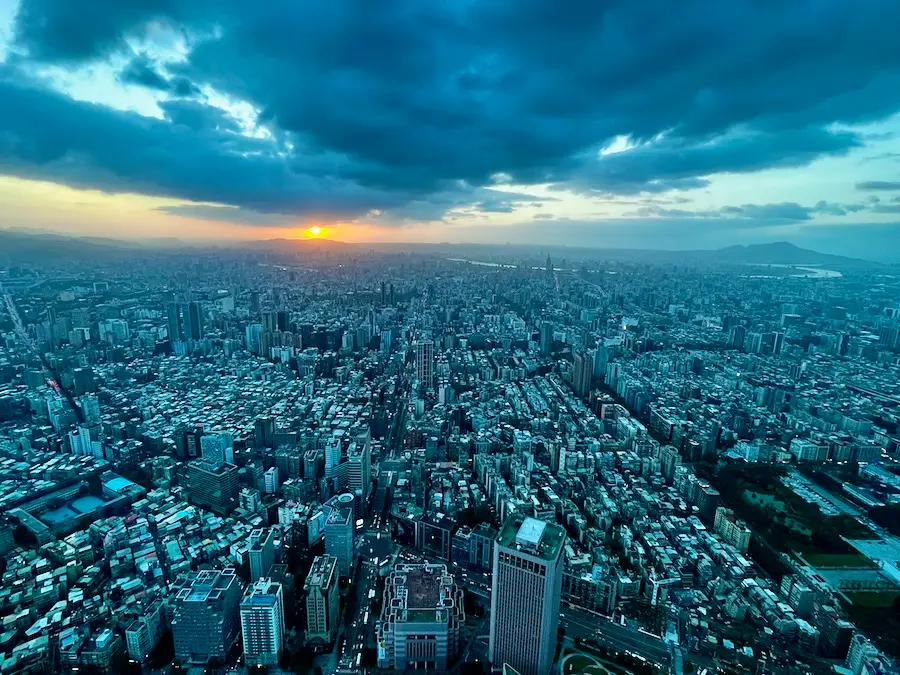
🌟 Top Things To Do: The best thing to do at Taipei 101 is to catch the sunset at the observation deck. While going up to the observatory, you will also get to ride one of the fastest elevators in the world (it was the fastest from 2004 to 2015). Taipei 101 also has many fun photo stations.
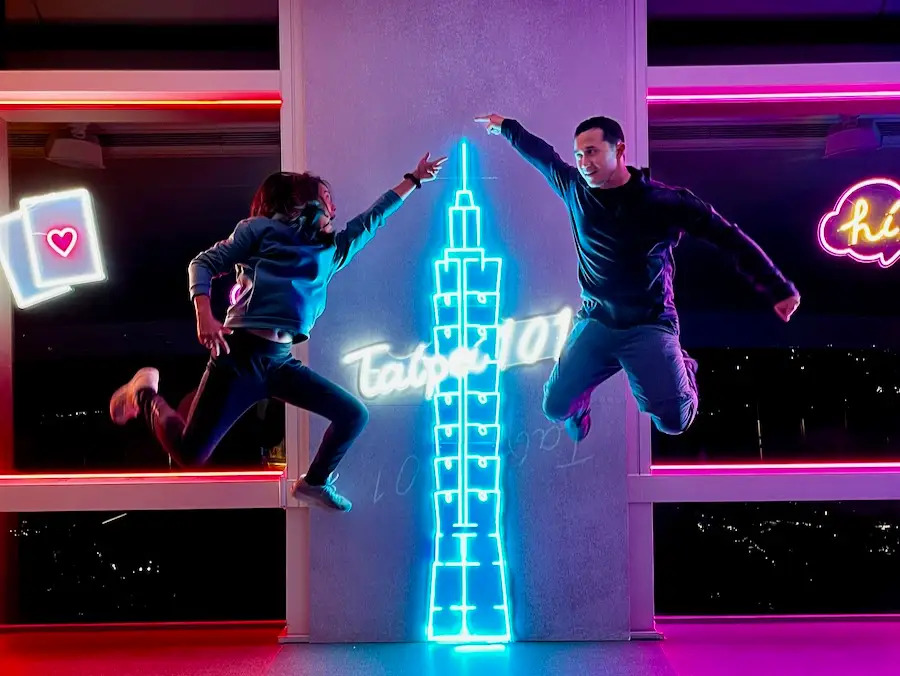
8. Visit Chiang Kai-Shek Memorial Hall
🇹🇼 Why: Chiang Kai-shek Memorial Hall is a national monument and a popular tourist spot. It’s surrounded by a pretty park where locals hang out, and the National Theater and Concert Hall are within a short walking distance.
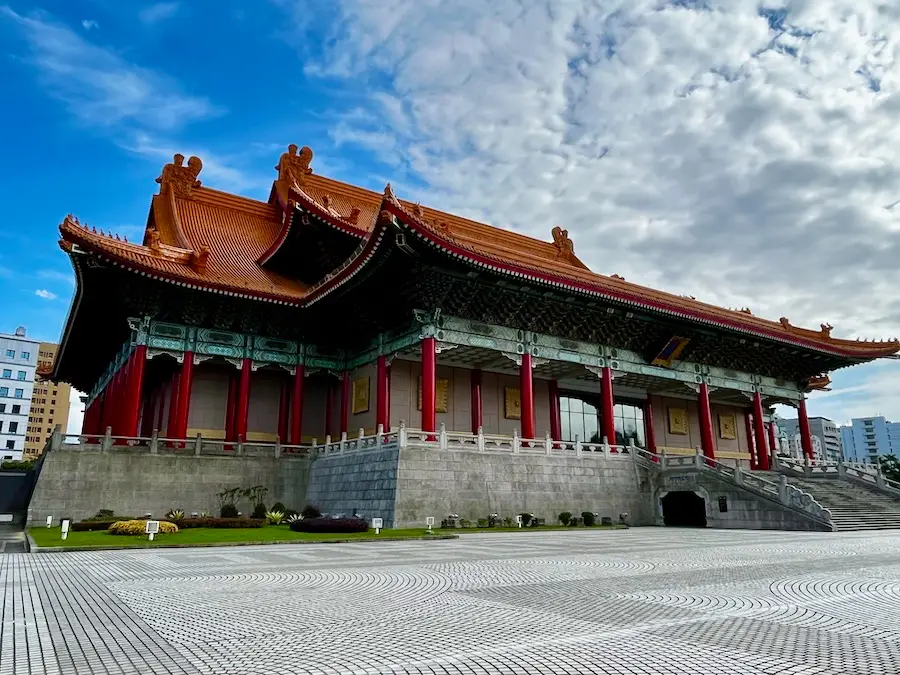
🌟 Top Things To Do: Walk or run around the park and look at the three stunning buildings in the complex: Chiang Kai-shek Memorial Hall, National Concert Hall, and National Theater. There’s also a changing of the guards in Chiang Kai-shek’s main hall every hour.
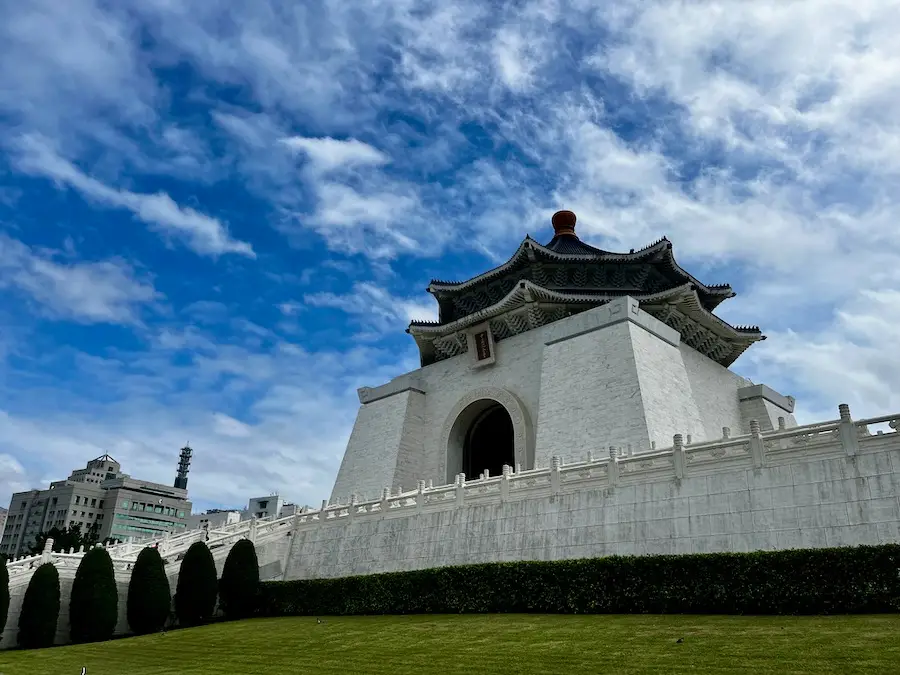
9. Explore Ximending District
👟 Why: Ximending District is a walkable district with shopping, food, street art, and Japanese culture. It’s also a very happening location, especially at night and early evening, where you might catch a few street performers.
🌟 Great Things To Do: Ximending is a great place to walk around and enjoy the lively atmosphere. You can:
- Check out the shops – The streets are lined with tattoo parlors, arcade games, trendy bubble tea flavor places, claw machine arcades, graffiti art, and more. I got a nice haircut here for $30, which included a tip.
- See street performers – They usually come out at night.
- Eat at a few food stalls – Pro tip: the Dian Dian Tea stall serves pawpaw smoothies, which are hard to get elsewhere.
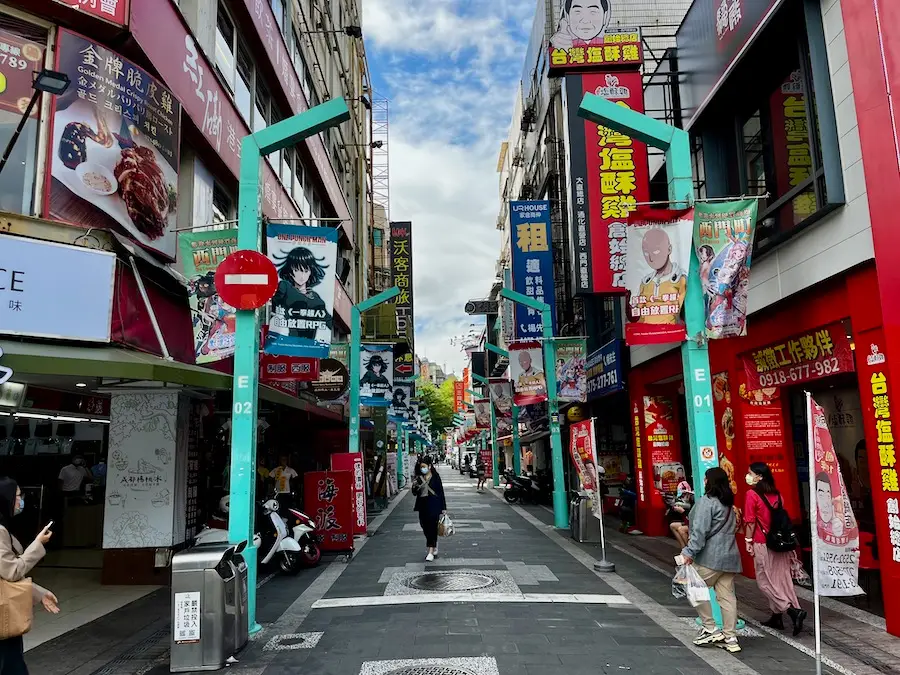
10. Take a Dip in a Beitou Hot Springs
🌡️ Why: Beitou’s hot springs may not be the most beautiful, but its proximity to Taipei makes it a perfect place to relax and get away from the city for a few hours.
🌟 Where To Visit: There are several hot springs in the Beitou area, and they vary in different ways: distance from the MRT, public vs. private, mixed-sex vs. sex-segregated, and price point. I visited the hot spring at Spring City Resort because it was mixed-sex, and I wanted to be with my friends.
The most interesting thing offered at the Spring City Resort was a hot marble stone you could lay on and take a soothing nap.
10 Great Things To Do in Taiwan
In rough order of closest to furthest away from Taipei, here are ten other popular things to do in Taiwan if you’re staying for a longer trip:
1. National Palace Museum
The National Palace Museum, located in the northern part of Taipei, has the world’s largest collection of Chinese artifacts and art. Its most famous work is the “Jaded Cabbage. ” The museum attracts visitors from all over the world for its historical significance and picturesque surroundings.
This museum is worth a visit if you’re an art enthusiast. Otherwise, it’s one of the first things my local friend tells people to skip if they have limited time in Taipei.
💰 Admission Fee: NT$350 (roughly $11)
⏰ Opening Hours: 9 am–5 pm; closed on Mondays
📍 Getting There From Taipei: 1 hour by MRT
2. Maokong
Maokong is known as Taipei’s tea town because it used to be the biggest tea-growing area. You can ride a Maokong gondola for scenic views, explore mountain hiking trails, and visit the nearby Taipei Zoo.
💰 Gondola Price: Starts at NT$70 (roughly $2)
⏰ Opening Hours: Usually 9 am–9 pm
📍 Getting There From Taipei: 20 minutes by MRT
3. Yangminshan National Park
Yangmingshan National Park, located in New Taipei City, is home to hot springs, terraced ponds, and even a crater lake. You can visit Yangminshan’s top attractions with a half-day guided tour.
The park also features over 60 hiking trails, making it a very accessible hiking park near Taipei.
💰 Admission Fee: Free, but you need to pay for parking
⏰ Opening Hours: 8:30 am–4:30 pm
📍 Getting There From Taipei: 30 to 50 minutes by car
4. Yehliu Geopark
Yehliu Geopark, located in New Taipei City and sometimes coupled with a trip to Jiufen, is known for its unique rock formations. The sea has eroded the landscape, leaving a bunch of honeycomb and mushroom-shaped rocks.
💰 Admission Fee: Free, but you need to pay for parking
⏰ Opening Hours: 8:30 am–4:30 pm
📍 Getting There From Taipei: 30 to 60 minutes by car
5. Lukang
Lukang is a town located on the west coast of Taiwan. It’s known for its traditional buildings and cultural heritage. Its historical charms draw in a lot of artists and creative people.
💰 Admission Fee: Several of Lukang’s temples have small admission fees
📍 Getting There From Taipei: 2 to 3 hours by TRA train
6. Sun Moon Lake
Sun Moon Lake, located in Central Taiwan, is the country’s most famous lake. It’s a beautiful spot for swimming and boating, and the surrounding mountains offer stunning views.
📍 Getting There From Taipei: 4 hours by TRA train
7. Alishan
Alishan, located in Central Taiwan, is famous for the Alishan National Scenic Area, which covers a vast area of mountain terrain. The area is also known for its tea plantations and many hiking trails ranging from easy to hard.
Alishan is also famous for its cherry blossoms, which bloom between late March and early April.
💰 Admission Fee for the Alisha Forest Railway: Starts at NT$300 (roughly $10)
⏰ Opening Hours: Open 24/7
📍 Getting There From Taipei: 5 hours by TRA train
8. Tainan City
Located in southern Taiwan, Tainan City is the country’s oldest city and the birthplace of many traditional Taiwanese foods. It is known for its ancient temples, local cuisine, and friendly residents.
📍 Getting There From Taipei: 3 to 4 hours by TRA train
9. Kaohsiung City
Located in southern Taiwan, Kaohsiung City is the third-largest city and an economic hub. As such, It offers everything from lively night markets and art galleries to a scenic port and pond.
📍 Getting There From Taipei: 3 hours by TRA train
10. Kenting National Park
Kenting National Park, located on the southern tip of Taiwan, is famous for its beautiful beaches and lush vegetation. Many say that it’s a relaxing park, but thanks to its natural beauty, it’s often very crowded and touristy.
💰 Admission Fee: Mostly free except a few areas
⏰ Opening Hours: Varies by area, but typically open 24/7
📍 Getting There From Taipei: 5.5 hours by TRA train
Where To Stay in Taipei
I stayed at two hotels in distinct neighborhoods during my one-week trip to Taipei. Here are my honest thoughts on the accommodations.
🏠 Hotel #1: I stayed at CHECK Inn Express in Daan District, where I paid $36 per person per night.
- 👍 Pros – The hotel was relatively local, with enough shops, attractions, and restaurants within walking distance. It was a straightforward accommodation with no extra frills or amenities.
- 👎 Cons – The rooms are tiny (e.g., there’s no space to open your carry-on luggage), and housekeeping isn’t included. For around the same price, you can stay at a much more happening place, which is why I stayed in a second hotel.
🏠 Hotel #2: I also stayed at Amba in Ximending District, where I paid $40 per person per night.
- 👍 Pros – Ximending is a happening place with many attractions and food options at night. The rooms were nice, and the included breakfast had many options.
- 👎 Cons – This is nit-picky, but the gap under the entrance door was fairly wide. I could hear hallway noises, and I suspect that’s how mosquitoes kept entering the room.
Taiwan Trip Planner 2025
Make planning easier with my flexible, research-backed travel planner—shaped by real experience. It has:
- Up-to-date travel info
- A well-curated itinerary
- Practical, firsthand insights & tips
- A simple budget tracker
- A starter packing list
- Fully customizable sections
Built in Notion, this is the tool I personally use to plan every trip. I genuinely love it and creating a Notion account is free.
Lists by Lukiih is a small site I fund myself. Downloading my trip planner is the best way to support me and keep it running—thanks!
